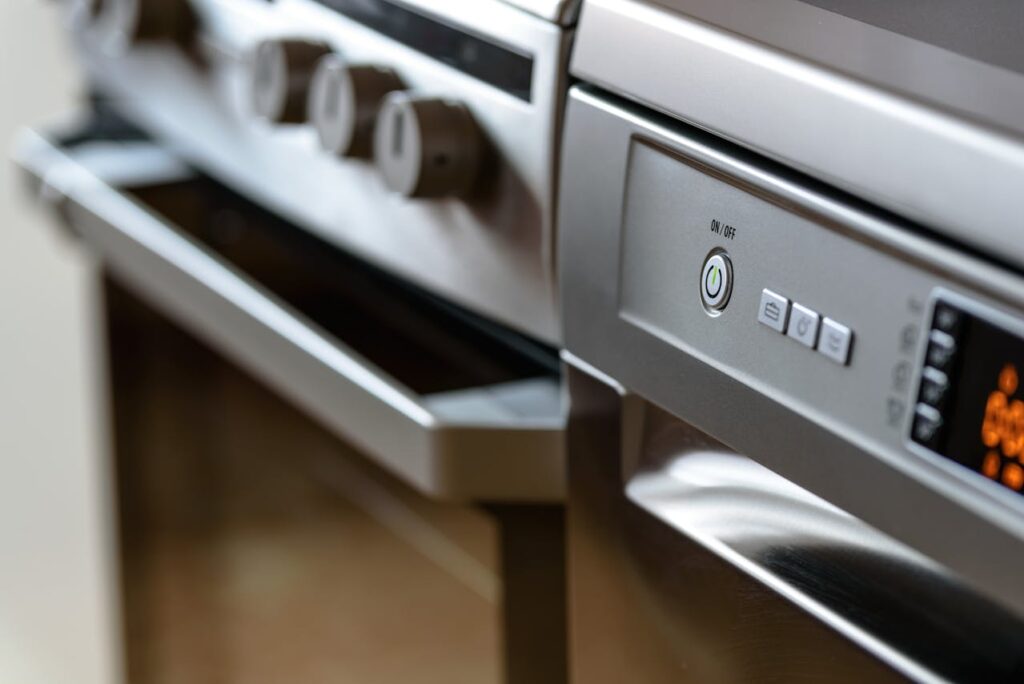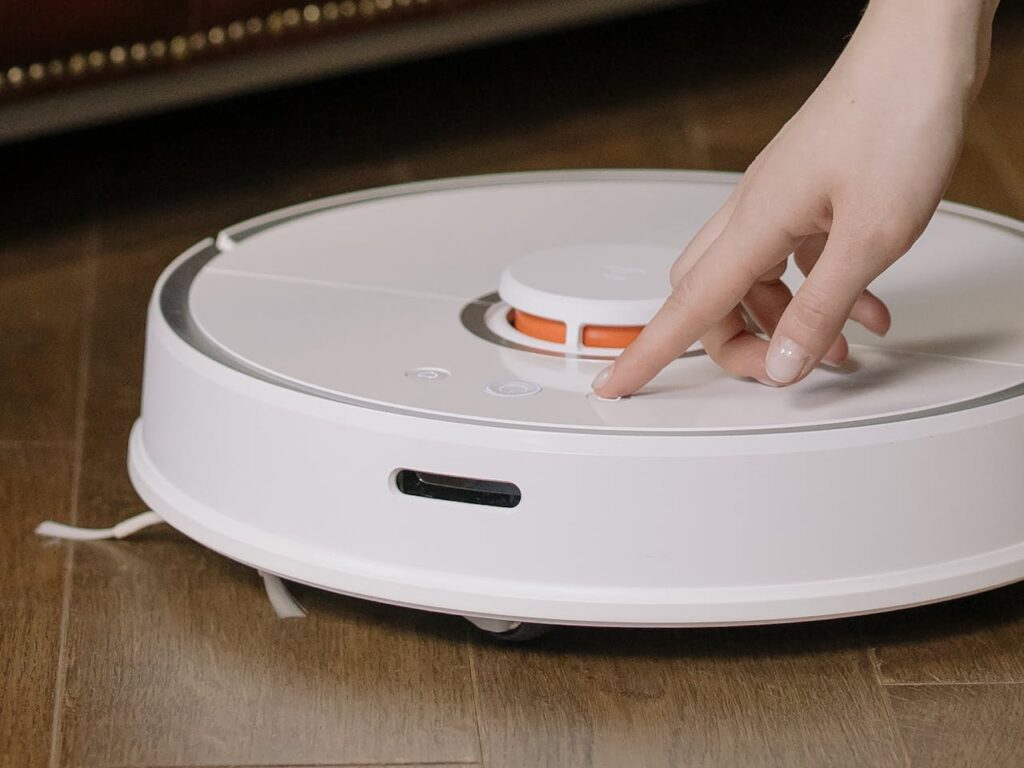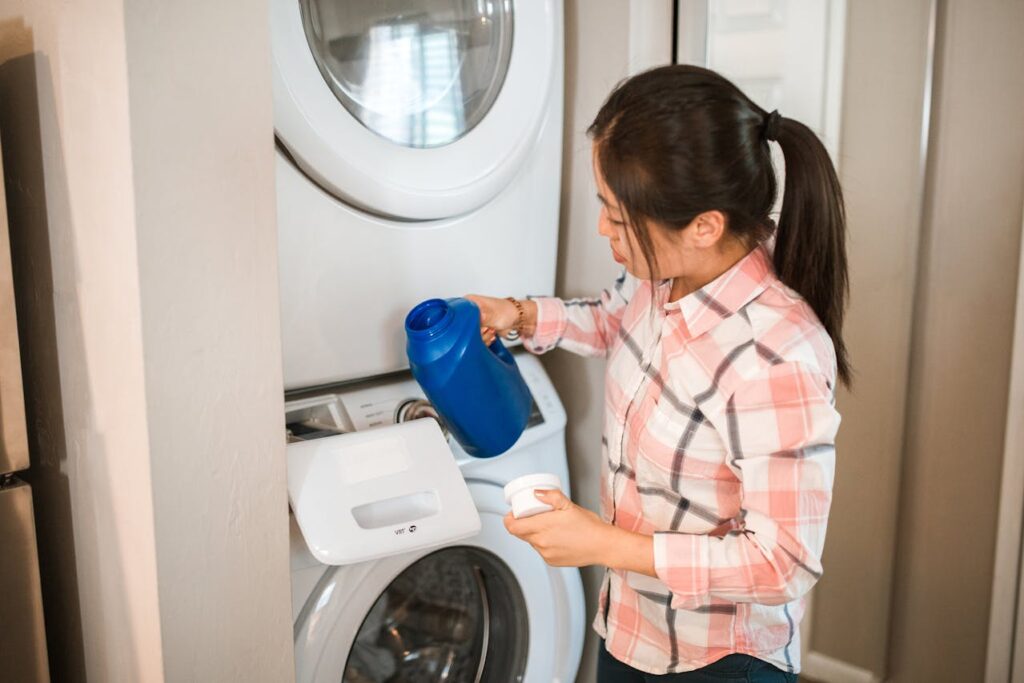Saving money on your utility bills can feel like a big challenge. But one simple way to start is by using energy-efficient appliances. These are machines designed to use less electricity or gas while still doing their jobs well.
Just think if your fridge or washing machine could work smarter, not harder—using less power but keeping everything cool or clean.
In this article, we’ll explore energy-efficient appliance tips for lower utility bills tips to help you choose and use energy-efficient appliances.
By making small changes, you can keep your home comfortable and save money at the same time. If this interests you, then read on to get started on making your home more energy-friendly!
Key Takeaways
- Energy-efficient appliances use less power but work just as well as regular ones.
- Look for labels like Energy Star to find the best appliances for saving energy.
- Running appliances only when full or at off-peak times can lower energy use.
- Regular maintenance helps appliances run smoothly and use less energy.
- Small changes add up to big savings on your utility bills over time.
What Does “Energy-Efficient” Really Mean?
When we say an appliance is energy-efficient, it means the appliance uses less energy to do the same job as other appliances. Think of it like a car that goes farther on one gallon of gas. It still drives you where you want to go, but it doesn’t drink as much fuel.
Energy-efficient appliances work smarter. They use clever technology to save power without making you wait or lowering their performance.
For example, a regular refrigerator might run all the time to keep your food cold, while an energy-efficient fridge uses special parts that help it run less but still stay cool.
Being energy-efficient is similar having a flashlight that lasts longer because it uses the batteries more wisely. This way, you don’t have to change batteries as often, and in your home, that means using less electricity and paying less money.
How Energy-Efficient Appliances Differ from Standard Ones
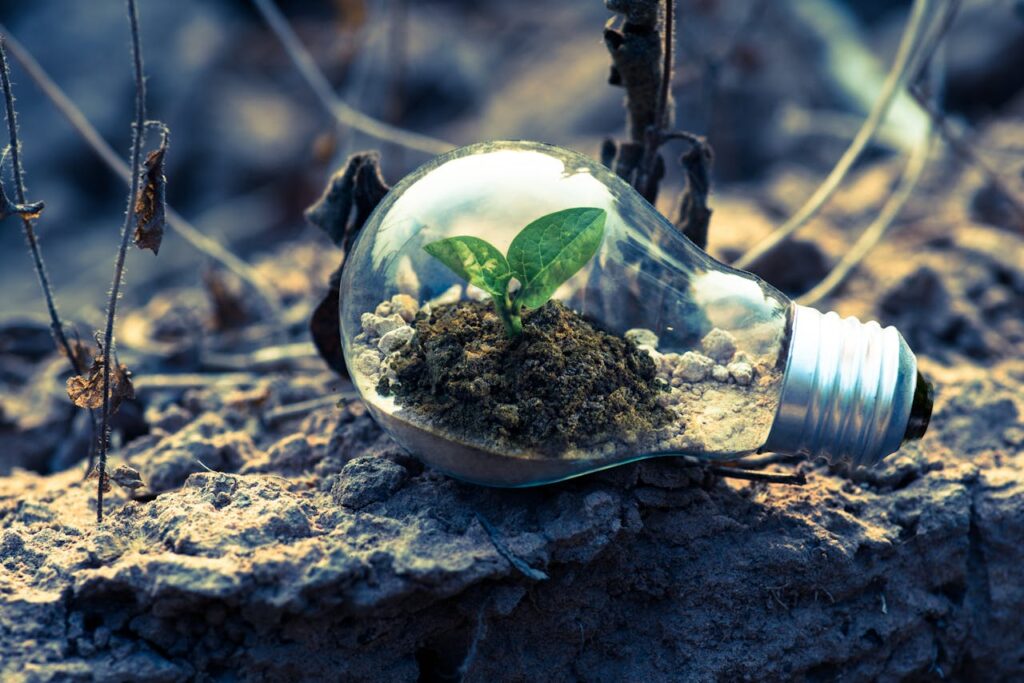
Energy-efficient appliances have a few tricks up their sleeves that make them different from standard appliances. Here’s how:
- Better Technology: Energy-efficient machines use newer parts and smarter designs. For example, washing machines might spin faster to dry clothes better, so the dryer uses less energy afterward.
- Less Waste: These appliances reduce wasted energy. Imagine a car that burns gas but spills some on the road—that’s waste. Energy-efficient appliances “spill” less energy by using power only when they really need it.
- Labels and Standards: Many energy-efficient appliances have a special label called Energy Star. This label is like a badge that tells you, “Hey, I’m good at saving energy!” You won’t see this badge on every appliance, only the ones that meet strict rules about energy use.
- Long-Term Savings: Energy-efficient appliances might cost a bit more at first, but they save you money over time. Like buying a sturdy pair of shoes that last years instead of cheap ones that wear out fast.
By choosing energy-efficient appliances, you get machines that work well, save energy, and help you pay less on your bills. It’s a win for you and a win for the planet!
Why Upgrading to Energy-Efficient Appliances Saves Money
Upgrading to energy-efficient appliances might seem like spending more money at first. But here’s the secret: they save you money every day after that. You’re basically planting a tree—you put in some work now, and later you get shade and fresh air for years!
Energy-efficient appliances use less electricity or gas. When they use less energy, your utility bills get smaller. For example, a fridge that uses 20% less energy means you pay 20% less to keep your food cold.
Also, these appliances usually last longer because they run smarter, not harder. That means fewer repairs and less need to buy new ones soon. Over time, the savings on bills and repairs add up and help your budget stay happy.
Top Energy-Efficient Appliances to Consider
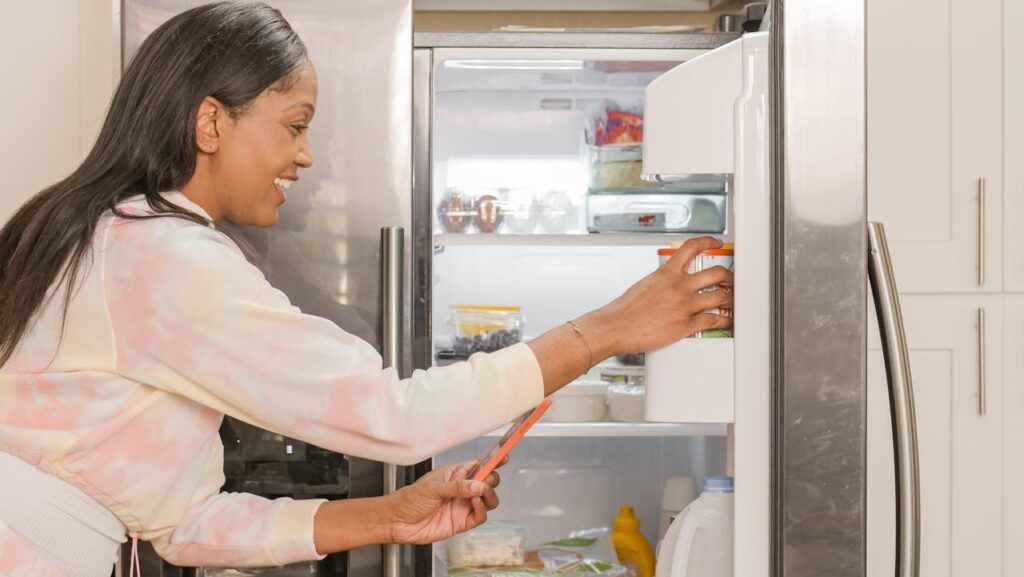
If you’re ready to upgrade, here are some of the best energy-efficient appliances to think about first:
Refrigerators
Refrigerators run all day, every day! New energy-efficient models keep your food just as cold but use much less power. Look for fridges with good insulation and smart cooling systems. They can save you a lot because they don’t have to work as hard.
Washing Machines and Dryers
Washing machines use water and electricity. Energy-efficient washers use less water and spin clothes faster, so they need less drying time. Dryers can use a lot of power, so look for models with moisture sensors that stop drying as soon as clothes are dry.
Dishwashers
Running a dishwasher uses less water and energy than washing by hand—especially if you only run it when it’s full! Energy-efficient dishwashers use less hot water and have special cycles that save energy but still get your dishes clean.
Heating and Cooling Systems
Heating and cooling your home is often the biggest energy use. New energy-efficient systems use less power to keep your house warm or cool. Look for models with a good Energy Star rating and features like programmable thermostats to save energy when you’re not home.
Now that we know how energy-efficient appliances can save money and which ones make the biggest difference, it’s time to learn how to get the most out of them.
Energy-Efficient Appliance Tips for Lower Utility Bills
Using appliances wisely can make a big difference in your energy bills. Even small changes in how you use everyday machines add up to big savings over time.
The following energy-efficient appliance tips for lower utility bills below will help you get the most out of your appliances while keeping your home comfortable.
Unplug Devices When Not in Use to Stop Phantom Power Drain
Even when devices are turned off, some still use a little electricity if they’re plugged in. This is called phantom power or standby power. Think of it like a tiny drip from a faucet that wastes water over time.
Unplugging chargers, TVs, and other gadgets when you’re not using them can save energy and lower your bills. If unplugging feels like a hassle, try using a power strip. You can switch off several devices all at once!
- Unplug phone chargers and small gadgets when they’re not charging.
- Use power strips to turn off multiple devices with one switch.
- Avoid leaving TVs and game consoles in standby mode overnight.
- Remember to unplug kitchen appliances like toasters and coffee makers after use.
Use LED Bulbs Instead of Incandescent for Longer, Efficient Light
Lighting can take a big chunk of your electricity use, but switching to LED bulbs can change that. LEDs use way less energy and last much longer than old-style incandescent bulbs.
Just visualize swapping out a tire that needs replacing every month for one that lasts for years—that’s how LEDs work for your home’s light. Plus, they come in all kinds of brightness and colors, so you don’t have to miss that cozy glow.
- Replace incandescent bulbs with LED bulbs in rooms you use often.
- Choose LEDs with the right brightness (lumens) for each space.
- Use dimmable LEDs in places where softer light is better.
- Turn off lights when you leave a room to save extra energy.
Run Full Loads in Your Dishwasher to Maximize Energy Use
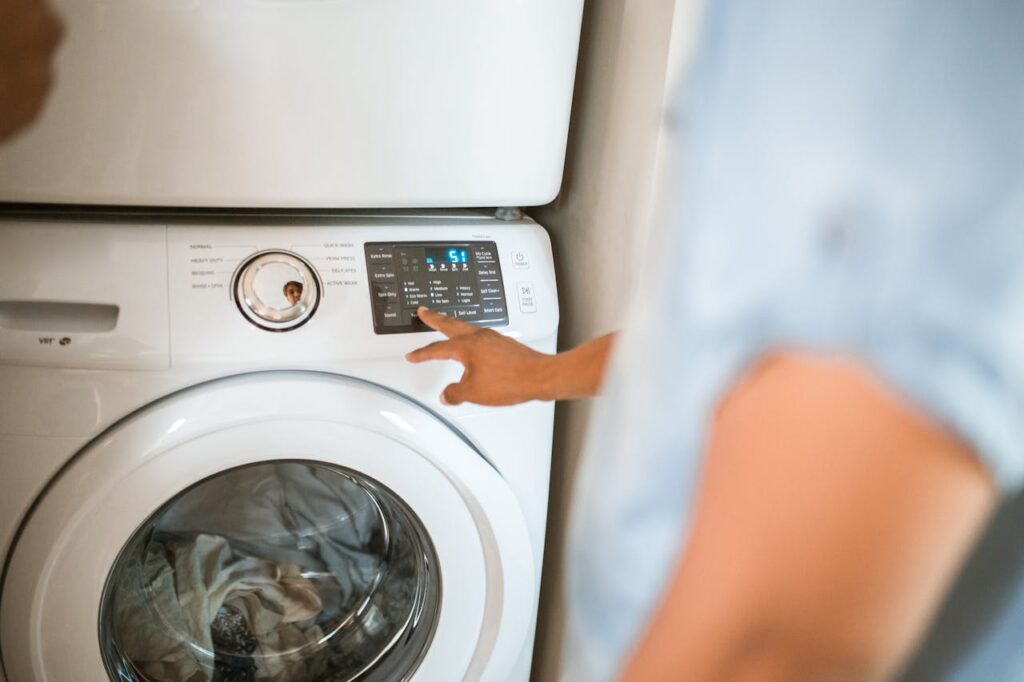
Dishwashers are powerful helpers, but they work best when full. Running a dishwasher with just a few dishes is similar to filling a car with only one passenger—it’s just not efficient! Wait until your dishwasher is full before turning it on.
This way, you use the same amount of energy but clean more dishes. It’s a simple trick that adds up to big savings.
- Only run your dishwasher when it’s completely full.
- Scrape, don’t rinse dishes before loading to save water.
- Use energy-saving or eco cycles when available.
- Avoid running the dishwasher during peak electricity hours if possible.
Set Your Refrigerator Temperature Between 35-38°F for Efficiency
Your refrigerator needs to be cold enough to keep food fresh but not so cold that it wastes energy. Setting the temperature between 35 and 38 degrees Fahrenheit hits the perfect balance.
Think of it like Goldilocks: not too hot, not too cold, just right! If your fridge is colder than that, it works harder and uses more electricity, which can mean higher bills.
- Use a refrigerator thermometer to check the temperature.
- Avoid setting the fridge too cold—no need to freeze your veggies!
- Keep the door closed as much as possible to maintain temperature.
- Don’t overload the fridge; air needs to circulate to keep things cool.
Clean Dryer Lint Filters Before Every Use to Improve Drying Speed
A clean dryer lint filter isn’t just safer—it helps your dryer work better and faster. When the filter is clogged, air can’t flow properly, and the dryer takes longer to dry clothes.
This wastes electricity and can wear out your machine sooner. Cleaning the lint filter before each load is a small habit that saves energy and keeps your dryer happy.
- Remove and clean the lint filter before starting each load.
- Check for lint buildup around the dryer drum and vent.
- Keep the dryer vent clear outside your house.
- Use dryer balls to help clothes dry faster and more evenly.
Use Cold Water for Laundry to Cut Heating Energy Costs
Washing clothes in cold water can save a surprising amount of energy. Heating water uses lots of electricity or gas, so skipping the hot wash cuts those costs down.
Plus, cold water is gentler on clothes and keeps colors bright longer. Unless your clothes are really dirty or greasy, cold water usually does the job just fine!
- Wash most clothes in cold water unless heavily soiled.
- Choose cold-water detergents that clean well at lower temps.
- Pretreat stains instead of using hot water cycles.
- Use shorter wash cycles when possible to save energy and time.
Replace Old Appliances with ENERGY STAR Certified Models
One of the best ways to save energy is by swapping out old appliances for ENERGY STAR certified ones. These models meet strict rules for energy efficiency, so they use less power while doing the same jobs. For example, an old refrigerator might use two or three times more energy than a new ENERGY STAR fridge.
Upgrading can seem like a big step, but it’s a smart investment because it cuts down your energy consumption and helps your bills stay low for years.
- Look for the ENERGY STAR label when shopping for new appliances.
- Compare energy use labels to find the most efficient option.
- Consider appliance rebates or discounts for ENERGY STAR products.
- Donate or recycle old appliances responsibly.
Seal Gaps Around Doors and Windows to Prevent Heat Loss
Did you know tiny cracks around your doors and windows let warm or cool air sneak out? Sealing these gaps is an easy way to save energy. When your warm air escapes in winter or cool air leaks in summer, your heating or cooling system works overtime.
Fixing these leaks means your air conditioner or heater doesn’t have to run as much, which lowers your energy bills and keeps your home comfy.
- Use weatherstripping or caulk to seal cracks and gaps.
- Check for drafts by feeling around windows and doors on a windy day.
- Install door sweeps to block air from under doors.
- Add plastic window film for extra insulation in winter.
Use Ceiling Fans to Reduce Reliance on Air Conditioning

Ceiling fans are great helpers for staying cool. They move air around so you feel cooler, even without lowering the temperature. Using fans lets you raise the thermostat a few degrees, cutting down how often your air conditioner runs.
This reduces energy consumption without making you sweat. Fans are an energy-efficient way to stay comfortable and save money.
- Set ceiling fans to spin counterclockwise in summer for a cooling breeze.
- Turn fans off when you leave the room—they cool people, not rooms.
- Use fans with lights to reduce the need for extra bulbs.
- Combine fans with natural ventilation to keep air moving.
Avoid Using Your Oven During Hot Days to Lower Cooling Needs
Ovens can heat up your whole kitchen and make your house warmer. On hot days, this extra heat forces your cooling system to work harder, increasing your energy use. Instead, try grilling outside or using a microwave or slow cooker.
Avoiding the oven on hot days is a simple tip that helps reduce your overall energy consumption and keeps your home cooler.
- Cook outside on a grill or use a microwave or slow cooker.
- Prepare cold meals like salads or sandwiches when it’s hot.
- Bake during cooler parts of the day, like early morning or evening.
- Use a toaster oven for small meals instead of the full oven.
Defrost Your Freezer Regularly to Maintain Efficient Cooling
Ice build-up in your freezer makes it harder for the appliance to stay cold. When the coil inside your freezer is covered in frost, the machine has to work harder and uses more energy.
Regularly defrosting your freezer helps it run smoothly and keeps your electricity use down. This small chore is an easy way to save energy and keep your food fresh.
- Check freezer coils for ice buildup every few months.
- Turn off and defrost the freezer when ice is thicker than ¼ inch.
- Clean the freezer thoroughly during defrosting.
- Avoid leaving the freezer door open too long to reduce frost.
Install Smart Thermostats for Precise, Energy-Saving Control
Smart thermostats learn your schedule and adjust the temperature automatically. This precision means your heating and cooling systems don’t waste energy when no one is home.
For example, a smart thermostat can lower the heat during the day and warm the house just before you arrive. This clever control reduces your energy consumption and makes your home more comfortable—all without you lifting a finger!
- Program your thermostat to lower heating or cooling when away.
- Use smartphone apps to control temperature remotely.
- Set temperature schedules that match your daily routine.
- Use energy reports from your thermostat to track savings.
Opt for Front-Loading Washing Machines to Save Water and Power

Front-loading washing machines are a great choice if you want an energy efficient way to do laundry. They use less water than top-loaders and spin clothes faster, which means less time in the dryer. Using less water and electricity helps you save energy and money on your bills.
Plus, less water use means a smaller carbon footprint, which is better for the environment. Switching to a front-loader is a smart step toward a greener home.
- Choose front-load washers that use less water than top-load models.
- Use the high-spin setting to reduce drying time.
- Run full loads to maximize water and energy efficiency.
- Clean the washer drum regularly to keep it running smoothly.
Lower Water Heater Temperature to 120°F to Save Energy
Your water heater uses a lot of energy to heat water, sometimes more than you realize. Setting the temperature to 120 degrees Fahrenheit is usually just right for most families. It’s hot enough for cleaning and showers but not so hot that it wastes energy.
Lowering the temperature reduces your water heating costs and helps you save energy and money. If you haven’t had an energy audit recently, this is an easy change that often gets overlooked.
- Adjust your water heater thermostat to 120°F for safety and savings.
- Insulate your water heater tank and pipes to keep heat in.
- Fix leaks promptly to avoid wasting hot water.
- Consider a timer to turn off your water heater during long absences.
Use Power Strips to Easily Switch Off Multiple Devices
Many electronics and chargers keep drawing power even when turned off. This sneaky use of electricity can add up. Using power strips lets you switch off several devices at once. It’s a quick and simple way to stop wasting electricity when you’re not using your gadgets.
This small step helps you save energy and lowers your bills—like turning off the lights when you leave a room!
- Plug groups of electronics into power strips for easy on/off control.
- Turn off power strips when devices aren’t in use, like at bedtime.
- Choose power strips with surge protection for safety.
- Label power strips to remember what devices they control.
Air Dry Clothes When Possible to Skip Dryer Electricity Use

Dryers use a lot of energy to heat and tumble clothes. When the weather is nice, air drying your laundry outside or inside on a rack is a fantastic way to cut energy use.
Your basically giving your clothes a gentle, natural sun bath! Air drying helps you save energy, reduce wear on your clothes, and lower your carbon footprint. Plus, it’s free and fresh-smelling!
- Hang clothes outside on a sunny or breezy day for free drying.
- Use drying racks indoors if outside drying isn’t possible.
- Shake out clothes before hanging to reduce wrinkles.
- Fold or iron clothes promptly to avoid wrinkles after air drying.
Regularly Clean HVAC Filters to Maintain System Efficiency
Your heating and cooling system works best when it’s clean. Dirty filters make your system work harder, increasing energy use and wearing parts out faster.
Cleaning or replacing HVAC filters regularly keeps air flowing well and improves energy efficiency. It’s similar to changing the oil in a car—simple maintenance that helps everything run smoothly. It’s a small habit that helps you save energy and money while keeping your home comfortable.
- Check your HVAC filters once a month during heavy use seasons.
- Replace filters every 1-3 months or as recommended.
- Use the correct filter size and type for your system.
- A clean filter improves air flow and reduces energy use.
Conclusion
Using energy-efficient appliances is a smart way to lower your utility bills without giving up the things you need. When you pick the right machines and use them wisely, you help both your wallet and the planet.
Remember, every little step counts—whether it’s choosing an Energy Star product or running your dishwasher only when it’s full.
With these energy-efficient appliance tips for lower utility bills, saving energy can become part of your daily routine. So, why not start today and watch those bills shrink?
FAQs
1. What runs your electric bill up the most?
Major appliances like HVAC systems, water heaters, and dryers use the most energy. Using them wisely and during off-peak hours can help reduce your electricity.
2. What appliance burns the most electricity?
The air conditioner is one of the highest energy users in most homes. Proper maintenance and thermostat control help reduce unnecessary energy consumption.
3. Does turning appliances off at the plug save money?
Yes, it stops phantom power drain. Even when off, certain appliances still use electricity if plugged in. A power strip makes this easier.
4. How can we improve the energy efficiency of appliances?
Clean filters, maintain condenser coils, and use smart settings. Choosing energy-efficient appliances with the Energy Star label also helps.
5. Are auto-sensor dishwashers more energy efficient?
Yes. They use sensors to detect dirt levels, using just enough water and energy. It’s a smart way to reduce utility use without sacrificing performance.
6. How can I save energy when preheating my oven?
Only preheat when needed, and don’t use the oven for long when it’s hot outside. Try small appliances instead, like a toaster oven.
7. How often should I clean my refrigerator coils to maintain efficiency?
Clean them every 6 months. Dirty coils make your refrigerator work harder, increasing electricity consumption and possibly leading to higher energy bills.
8. What are the best energy-efficient appliances to buy?
Look for Energy Star appliances like refrigerators, washers, and HVAC systems. These meet energy efficiency standards set by the Department of Energy.
9. How can I reduce my electricity bill without big upgrades?
Use LED bulbs, run full loads in dishwashers, and lower your water heater temp. These are simple energy-saving tips anyone can follow.
10. What’s the symbol for energy efficiency on appliances?
The Energy Star symbol. It shows the product meets strict energy efficiency standards and can help you reduce your carbon footprint.
11. Is it better to run appliances during off-peak hours?
Yes! Electricity during off-peak hours often costs less. Run your washer, dryer, and dishwasher at night or early morning when demand is lower.
12. How do smart thermostats help reduce energy use?
They learn your habits and adjust heating or cooling automatically. This reduces electricity usage and keeps your home energy smart.
13. Should I consider a tankless water heater?
Yes, especially if your current one is old. It heats water only when needed, reducing water heating costs and saving energy.
14. How do I know if I need an energy audit?
If your electricity bill seems high or you want energy savings, get one. An audit shows ways to improve home energy use with practical tips.
15. What’s a good way to keep your appliances running efficiently?
Keep your appliances clean, follow maintenance schedules, and avoid overloading them. This keeps them working longer and cuts the cost of energy.

